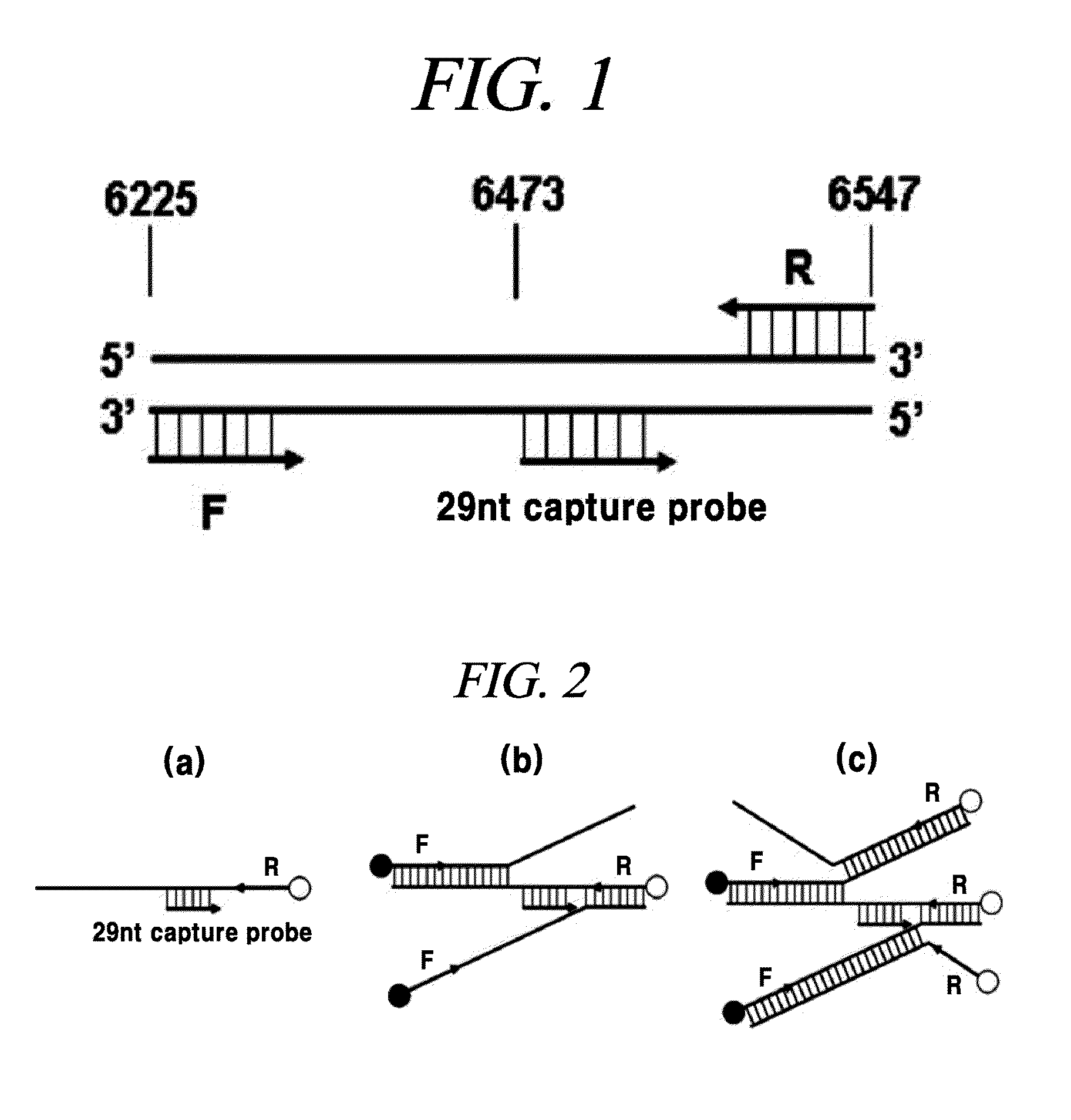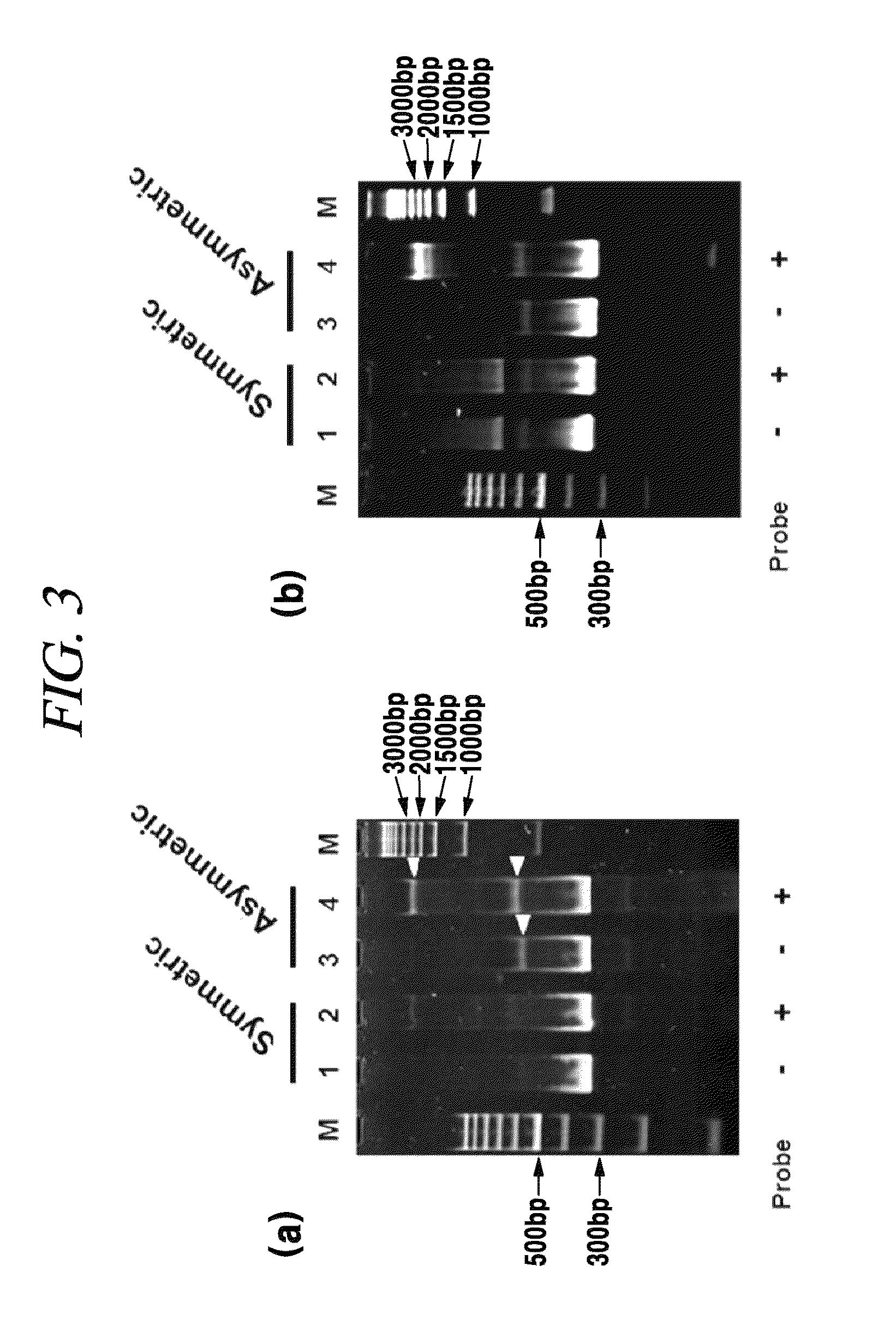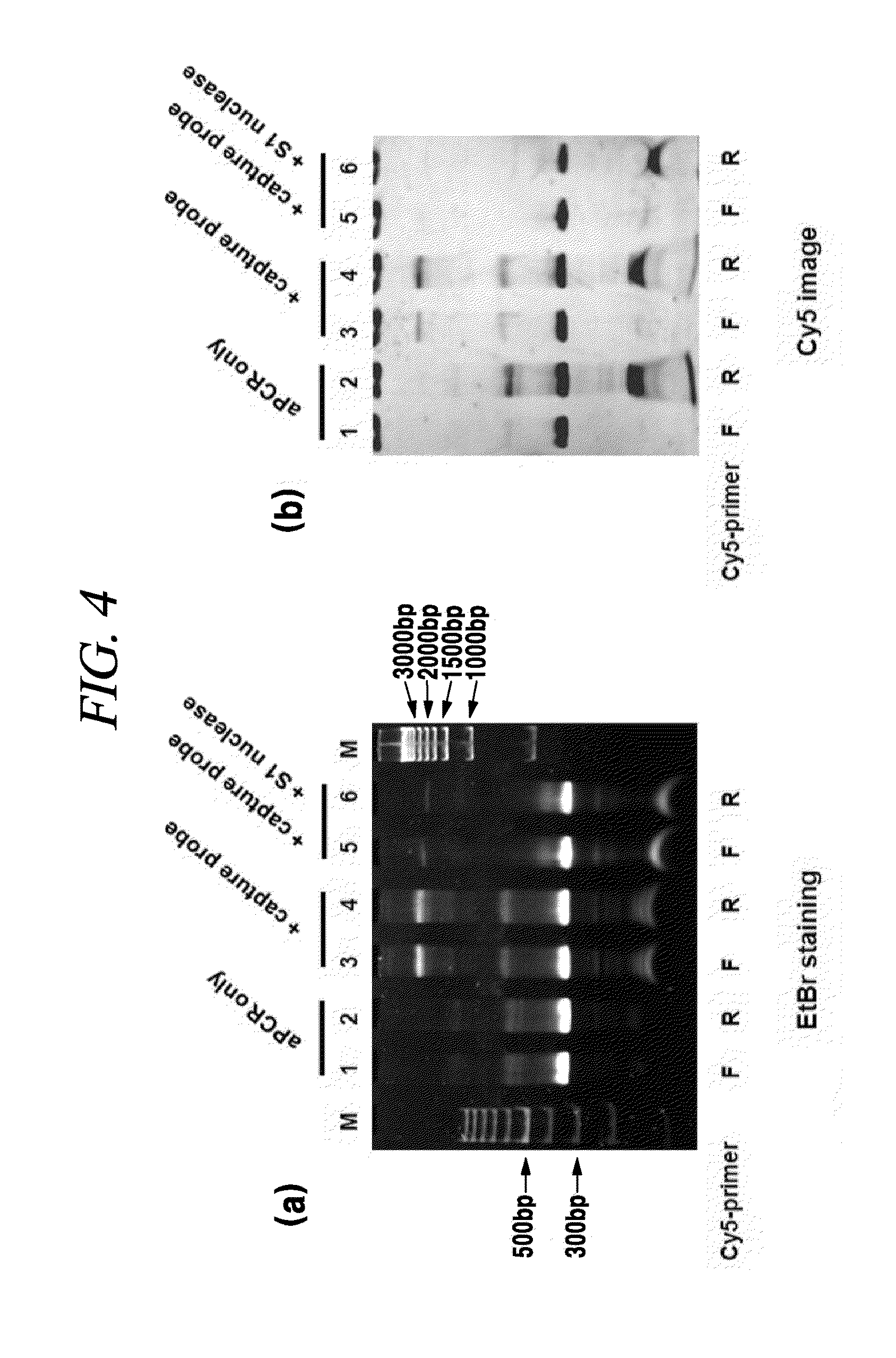Method for detecting nucleic acids by promoting branched DNA complex formation
a nucleic acid and complex technology, applied in the field of nucleic acid detection methods, can solve the problems of inconvenient process, high time and effort, and the method using a short nucleic acid probe requires a lot of time and effort, and achieves high signal, high reliability, and high sensitivity of the integrated implementation process
- Summary
- Abstract
- Description
- Claims
- Application Information
AI Technical Summary
Benefits of technology
Problems solved by technology
Method used
Image
Examples
example 1
[0086]Condition for PCR and Hybridization for Detecting HPV DNA
[0087]A capture probe and a PCR primer used for detecting a HPV16 DNA are shown in FIG. 1 and a detailed sequence thereof is as follows.
[0088]PCR Primer Set A:
[0089]Primer having sequence entirely complementary to a HPV16 L1 site
(sequence No. 1)Forward primer (F):5′-GATGGTAGTATGGTTCATACTGGCTTTGG-3′(sequence No. 2)Reverse primer (R):5′-GCATCAGAGGTAACCATAGAACCACTAGG-3′
[0090]PCR Primer Set B:
[0091]Common primers used for genotyping of about 40 kinds of HPVs were prepared to recognize HPV L1 sites of the all HPVs each having a slight difference in sequence.
(sequence No. 3)Forward primer (GP4F):5′-GATGGTGATATGGTAGATACAGGATTTGG-3′(sequence No. 4)Reverse primer (GP4R):5′-GCGTCAGAGGTTACCATAGAGCCACTAGG-3′
[0092]Capture Probe:
(sequence No. 5)HPV16 capture probe:5′-CTCTGGGTCTACTGCAAATTTAGCCAGTT-3′(sequence No. 6)HPV18 capture probe:5′-CACAGGTATGCCTGCTTCACCTG-3′
[0093]In a PCR primer, a 5′ end was labeled by connecting it with one of ...
example 2
[0105]Formation of Branched DNA Complex (Aggregated DNA) Between Asymmetric PCR Product and Capture Probe
[0106]In order to prove that a DNA complex greater than the PCR product was formed in case of hybridization of a capture probe with a PCR product, a HPV16 plasmid was amplified by means of a symmetric PCR and an asymmetric PCR and heat-treated at about 95° C. for about 5 minutes and then hybridized with a HPV16 capture prove at about 50° C. for about an hour. Then, a DNA was analyzed by polyacrylamide gel electrophoresis and the result thereof is provided in FIG. 3.
[0107]FIG. 3 is an electrophoresis result image proving assembly of aggutinates (or a branched DNA) between a capture probe and an asymmetric PCR product. FIG. 3(a) shows that a symmetric PCR and an asymmetric PCR were implemented with a primer set A having a sequence entirely complementary to a HPV16 L1 site, a 29 nt HPV16 capture probe was added to the reaction mixture, a DNA was denatured at about 95° C., and hybrid...
example 3
[0109]In order to get information of a structure of a complex, an asymmetric PCR was implemented with a genotyping primer Cy5-GP4F or Cy5-GP4R, denaturation was implemented at about 95° C., hybridization with a capture probe was implemented, and a DNA was purified. The purified DNA was treated with S1 nuclease specific to a single-strand and electrophoresed. Then, a Cy5 image was scanned with a LAS 4000 image analyzer and the result thereof is provided in FIG. 4.
[0110]FIG. 4 shows that a branched DNA complex includes not a normal double-chain DNA but a single-chain site and a gap. In case of an asymmetric PCR with a genotyping primer set B, a PCR was implemented with a Cy5-labeled forward primer or a Cy5-labeled reverse primer, a capture probe was added, denaturation was implemented at about 95° C., and hybridization was implemented at about 50° C. After a DNA was purified, it was treated with S1 nuclease specific to a single-chain and electrophoresed. FIG. 4(a) is an image of EtBr ...
PUM
| Property | Measurement | Unit |
|---|---|---|
| pH | aaaaa | aaaaa |
| pH | aaaaa | aaaaa |
| pH | aaaaa | aaaaa |
Abstract
Description
Claims
Application Information
 Login to View More
Login to View More - R&D
- Intellectual Property
- Life Sciences
- Materials
- Tech Scout
- Unparalleled Data Quality
- Higher Quality Content
- 60% Fewer Hallucinations
Browse by: Latest US Patents, China's latest patents, Technical Efficacy Thesaurus, Application Domain, Technology Topic, Popular Technical Reports.
© 2025 PatSnap. All rights reserved.Legal|Privacy policy|Modern Slavery Act Transparency Statement|Sitemap|About US| Contact US: help@patsnap.com



